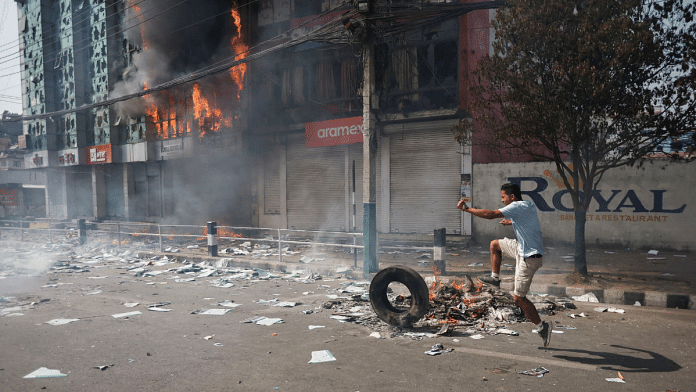Thank you dear subscribers, we are overwhelmed with your response.
Your Turn is a unique section from ThePrint featuring points of view from its subscribers. If you are a subscriber, have a point of view, please send it to us. If not, do subscribe here: https://theprint.in/subscribe/
When a crisis unravels we tend to give it many reasons – some are contemporary, some are historic , some natural or some can even be rumors. However, there can be a combination of known and unknown facts which are seemingly diluted, many a times discussing reasons often ignoring the realities.
Let me try here to engage in a parallel discussion, that can open up a different perspective which can be closer to the reality or maybe far away from it.
Nature has many cyclical actions that have primarily three stages – creation , co-existence and the demise. In simple terms it’s our birth, life and death. Likewise the cycle continues with the creation, destruction and rejuvenation as the extension of the next stage in a different dimension. Everything has to complete the final stage once the cycle has started. This is one of the laws of nature.
All that ends is the start of a new creation, the new creation or the start of the new cycle will be in a new dimension, time and space. All of the realities of the new dimension depends on the frequency of perception and the nature we live in.
We are bound to the organic and in-organic cycles of nature. Organic has a definite time span but inorganic does not, but acts within an organic cycle. Like our life has a natural cycle but an accident can end our life.
The natural disasters are fulfillments of certain cyclical events. The war we fight or the destruction of a society or a nation or a race are summation of this cycle. The revolutions that put forth a new ideology or reinstate a lost cause are the cycles that reverberate amongst mankind’s never ending urge to satisfy the fulfilment of this law of nature.
The laws can be man made or natural without which we cannot be organized. These are required for the proper functioning of the wheel of cycle. Even morality or virtues are bound by unwritten rules, the rules that keep us within limits. Since the government is the dilation of the society we expect it to function within obligations that satisfy the minimum requirement of morality and virtue. Once it is breached, the final stage is triggered without any rhyme or reason to abruptly end the cycle.
The Nepal crisis is the outcome of the breakage of these minimum obligations.
The governments are formulated to function once every four or five years. What we witness in Nepal is a manifestation of the collective effort to fulfil the rule since the government failed beyond imagination. The rule is to end the government cycle abruptly. The collective effort reminds me of the famous quote from the novel, The Alchemist.
It’s sad to see the kind of destruction and damage, to such levels that has shattered the image of its people. The government could have followed the minimum morality required to fulfil at least 40% of its people’s aspirations. It looked like less than 10% of people were only considered at many levels.
For me the equation goes like this -1%, 2%,5%,10%,20%,40% and the rest 20% ignored by all, the last 2% being in the unknown.
In any society there will be the ~1% who are the untouchables, the super power, they decide the rules, they are not visible in public, though they are not the ruling class they dictate terms. The 2% are the ruling class, the powerful who are visible, they are the govt. The 5% who live wealthy in public view, they are the millionaires. The 10% who are well off, stay away from the public view. These (1+2+5+10)18% form the Upper class in terms of wealth and power. This upper class includes people from all the religion, caste and creed. Now comes the 20% middle class whose survival depends on the economy, the next 40% who struggle always, the remaining 22% is always ignored. With the varying percentages, this is the structure more or less I could see anywhere in the world.
Only the 40% will be politically aware, the rest 60% will be mostly powerless. If a government can keep at least 40% under its wings then we have a properly functioning state. Even if this figure comes to just around 20% it can survive though there will be great chaos. But if it’s 10% vs 90% nothing can co-exist, that’s Nepal now.
In my personal opinion, I do not want such a government to survive. The government is of the people, by the people and for the people. In Nepal I see it’s of the 10%, by the 10% and for the 10%. However, the violence and destruction could have been avoided.
These pieces are being published as they have been received – they have not been edited/fact-checked by ThePrint.


